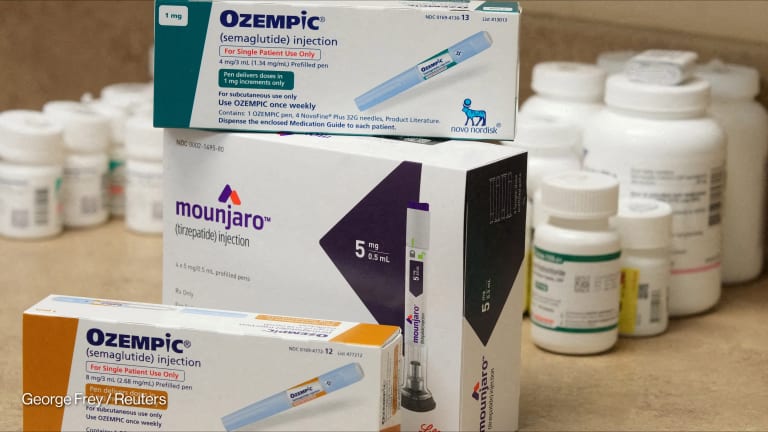
Imagine that you are the procurement officer of an NGO or a ministry. You need supplies — millions of insecticide-treated bed nets, for example — and your finance officer tells you that although they’ve secured a grant, you can’t make the purchase or even negotiate with suppliers.
You don't know when, you just know you can’t — yet.
With money on the way, a procurement officer should be able to move forward, especially knowing that it takes time to produce and ship products, and that the way you purchase ultimately shapes the market and affects overall timelines and systems.
But a number of factors — including the need to fundraise year after year with no long-term certainty, frequent delays in processing payment, even after approval, and the time it takes to complete the necessary eligibility requirements to ensure good governance — all add up to significant loss of time, money and, most importantly, lives.
To understand the range of challenges at play, let’s look at malaria and the early shape of the market from 2002 to 2005 as it was rapidly expanding to reach the mortality reductions we have seen today. Working with manufacturers and implementers, we could see that although public financing was growing, it wasn’t being designed to meet the needs of the producer or the aid recipient.
Take Artemisinin, for example, an antimalarial derived from the Qing Hao medicinal plant and malaria’s front-line treatment since the 1990s. In order to stave off advancing drug resistance, it needed to be combined with other compounds. More crops had to be planted and sowed, with farmers needing payment in advance, and manufacturers had to invest time and money to extract and synthesize a new combined therapy. Once the new treatment was ready, it then needed to be publicly approved, financed, distributed and finally accessed for free by patients. This all took time and investment that didn’t coincide with annual grant cycles and unpredictable payment terms.
Insecticide-treated bed net production was less intensive, but nonetheless we heard from manufacturers about factories opening and closing due to slow moving global health policy, unattainable forecasts, unreliable orders, and unworkable payment terms. Ministries could not discuss future performance or strategic planning without talking about the months of waiting for grants to be signed, so money could be disbursed and work could start.
Artemisinin and bed nets are just two examples in a longstanding history of cash flow bottlenecks. This inability to plan and subsequent underutilization of capital is not the fault of the aid recipient, nor the donor who provides it — but is an inherent flaw at the front end of the development market.
Delays in funding result in procurement inefficiencies, in part because buyers have no choice but to order at the last minute and pay for expedited production and shipping to avoid stock-outs. Having to wait unfortunately means low buying power.
This bottleneck extends to the supplier, of course, who is forced to keep prices high because they don’t know when they will get paid and therefore can’t plan medium term. As a result, factories open and close, yet products remain unsold despite stock-outs.
The Brookings Institution estimates that for every U.S. dollar spent on official development assistance, up to $0.28 in extra value could be re-captured through more predictable and accessible donor funding. This means that, globally, as much as $2.8 billion in value can be gained annually with the right financing.
Recognizing these inefficiencies and knowing there are ways to access capital and make it work more effectively is what inspired the Pledge Guarantee for Health program. In its first transaction with the World Bank, UNICEF and the Zambian government, PGH’s simple bridge loans to partners accelerated the delivery of 800,000 malaria bed nets so they would arrive ahead of the peak rainy season, saving thousands of lives and millions of local health dollars. Financing, procurement and delivery all took just six weeks from grant signature, a record-breaking speed, and the cost of capital was less than 1 percent.
Financing health programs in such innovative ways is possible.
Through a five-year partial guarantee from the United States and Swedish governments, PGH leverages up to $100 million in credit per year from commercial banking partners. They, in turn, extend low-cost, short-term credit to donor recipients, who are then empowered to use committed funding much earlier, increasing buying power, speeding up manufacturing and delivery, and saving lives.
During the recent World Bank annual meetings in Washington, PGH, pan-African banking conglomerate Ecobank and the Calvert Foundation announced $50 million in available credit designed to speed up the flow of capital to developing country governments — and, for the first time, to nongovernmental organizations. Public-private partnerships such as these illustrate a new way of doing business, in order to improve health and foster sustained development. PGH stands ready to develop financing partnerships to help speed up delivery of a range of products and drive aid value.
Imagine what could happen if innovative financing were used to speed the delivery of life-saving drugs to mitigate cholera outbreaks in Haiti or Ghana — or if regional private sector players took the risk to provide working capital to accelerate the response to Ebola in West Africa.
The short answer is that time and money would be saved. And, most importantly, lives would no longer hang in the balance.
Want to learn more? Check out the Healthy Means campaign site and tweet us using #HealthyMeans.
Healthy Means is an online conversation hosted by Devex in partnership with Concern Worldwide, Gavi, GlaxoSmithKline, International Federation of Pharmaceutical Manufacturers & Associations, International Federation of Red Cross and Red Crescent Societies, Johnson & Johnson and the United Nations Population Fund to showcase new ideas and ways we can work together to expand health care and live better lives.








